What is the 46% tax rate?
Public opinion has been "boiling" over the past two days with the news that the US will impose a 46% reciprocal tax on Vietnam. Many opinions have raised concerns that this tax will be imposed on Vietnamese goods exported to the US, causing serious impacts on the domestic economy, especially in the context that Vietnam is aiming for an 8% growth target this year.
However, economic experts say that we need to calmly reconsider what the "46% countervailing tax" really means?
According to Dr. Huynh The Du, lecturer at the School of Public Policy and Management, Fulbright University Vietnam, the reciprocal tax rate that US President Donald Trump proposed on April 3 is calculated by dividing the trade difference between the two countries by half and rounding up (there are some adjustment parameters but currently they are converted to 1).
For example, in 2024, the total import-export turnover between Vietnam and the US will reach 136.6 billion USD, of which Vietnam will export 123.5 billion USD, accounting for 90.4%. This number divided by halves and rounded up will be 46% - the "reciprocal tax" imposed on Vietnam.
More information is needed to understand better, however, Mr. Du said, it is necessary to understand that the 46% tax rate is not the tax rate on Vietnamese goods exported to the US. This is a figure from the US side that shows the seriousness of the two-way trade gap between the two countries.
And the next step when the US announces this tax rate is for countries to enter into negotiations - Mr. Trump's favorite thing - to come up with specific tax rates for each export item.
The specific tax rate for each item and the general rate for each country will depend on the negotiation process between the two sides and many other related issues such as the nature of the items, US priorities and conditions.
The 46% rate is not a tax rate levied on Vietnamese goods exported to the US.
Associate Professor Dr. Tran Dinh Thien, former Director of the Vietnam Economic Institute, also said that the Trump administration's imposition of a 46% tax sounds very serious, but when analyzed carefully, it can be seen that the story is not as "shocking" as imagined.
This is a reciprocal tax rate, which means it can change depending on how Vietnam reacts and negotiates. Currently, Vietnam has made initial moves such as reducing import taxes on some items from the US to ease the situation and will continue negotiations in the future.
Mr. Thien believes that, in the face of this information, negative reactions from public opinion may create chain effects, which can be beneficial or detrimental. Therefore, Vietnam must calculate to have appropriate behavior, should not generalize or "panic" in a crowd mentality, creating unnecessary shock.
Which industry exports the most to the US?
Vietnamese businesses face major challenges as the US imposes a 46% tax on exports, raising concerns about revenue and consumption markets. Vietnam is subject to a 46% reciprocal tax, among the highest among dozens of economies subject to reciprocal taxes under the tax decree signed by Mr. Trump in the early morning of April 3, Vietnam time.
According to experts, higher US tariffs will challenge both Vietnamese manufacturers and policymakers. Especially since tariffs on Vietnam's main competitors are lower than ours.
Mr. Nguyen Dinh Duy, CFA, director - senior analyst of VIS Rating - a credit rating company, said that the main industries that will be affected and most vulnerable are electronics, machinery and equipment, textiles, footwear and wooden furniture.
These industries account for the majority of exports to the US, and many businesses have a high proportion of export revenue dependent on the US market. However, Mr. Duy still expects the impact to be differentiated between industries and individual companies.
In addition, according to Mr. Duy, multinational companies manufacturing electronics and machinery equipment in Vietnam are better able to respond to tariffs by shifting part of their production activities or finished goods to other countries.
"But domestic manufacturers of textiles, footwear and wooden furniture may have few options to shift and find alternative consumption markets," Mr. Duy worried.
Not to mention, businesses that rely heavily on export sales will face higher costs, fewer orders and poorer operating cash flow.
High tariffs will hit Vietnam's double-digit growth target this year.
VIS Rating analysis group cited that, among domestic textile and garment manufacturers, Song Hong Garment Company (MSH) has 80% of its export revenue from the US market, TNG (TNG) 46%, Vietnam Textile and Garment Group (VGT) 35%, Thanh Cong Textile and Garment (TCM) 25%. Savimex (SAV), a large furniture manufacturer, has 50% of its export revenue from the US market.
Total exports are estimated to account for 85% of Vietnam’s GDP in 2024, making exports a key driver of economic growth. Higher tariffs on Vietnamese exports to the US would push up prices for US consumers and reduce demand and sales of Vietnamese products.
Impact on double-digit growth target?
According to expert Nguyen Tri Hieu, the US is an export market worth up to 119 billion USD/year for Vietnam. According to the new tax rate, Vietnam will have to pay a tax of up to 54 billion USD, equivalent to 10% of GDP. Mr. Hieu commented that this is a very heavy tax rate.
"The US is a major export market for Vietnam. If the US imposes a tax rate of up to 46% on 90% of goods exported from Vietnam to the US, it can be said that almost all Vietnamese goods exported to the US will be subject to the highest tax rate in the world. I am afraid that this will affect Vietnam's double-digit growth target this year," Mr. Hieu further emphasized.
Previously, according to analysis by KBSV Securities Company, about 50% of Vietnam's GDP and employment depend directly or indirectly on exports (according to WorldBank), in which the US market accounts for 30% of total export turnover. "We estimate that in the event of reciprocal tariffs imposed by the US, Vietnam's GDP will decrease by 0.7 - 1.3% compared to the baseline scenario. A report by Goldman Sachs shows that Vietnam's GDP will decrease by about 1.5% if Vietnamese goods are subject to a reciprocal tariff increase of about 13%," KBSV's report stated.
Dr. Le Duy Binh, Director of Economica Vietnam, predicts that the most affected industries are furniture (especially wooden furniture), textiles, footwear, agricultural products, seafood, electronics...
"If taxes increase, the price of imported goods to the US will increase. It is worth noting that the US tax rate on Vietnam is higher than other economies exporting the same goods to the US. This will reduce the competitiveness of Vietnamese goods because prices will increase. This is the most obvious impact," said Mr. Binh.
Agreeing with this view, expert Nguyen Tri Hieu said that Vietnam is more heavily affected than some countries that are direct competitors. According to the new tax rate table, Vietnam is subject to a higher tax rate of 10-20%.
“I often go to the US and see that many products originating from Vietnam are circulating in this market, including from fields such as garments, electronics, leather and footwear. With high tax rates, in the future, American businesses may choose these products from other countries with lower tax rates. This may cause FDI enterprises in Vietnam to change direction and look to neighboring countries for investment,” said Mr. Hieu.
With the new tax rate, Mr. Hieu said that Vietnamese goods will still be consumed in the US but certainly at a much lower level.
“At this point, we cannot predict how much Vietnamese goods may decrease, but from what I see, it is possible that it will decrease by half. A decrease by half will greatly affect Vietnam's GDP,” the expert said.
Economist Bui Kien Thanh fears that if the US imposes high tariffs on goods, it will be difficult for Vietnamese goods to be exported to the US because of high tariffs, and American consumers will choose similar goods from other countries with low tariffs. This will greatly affect Vietnam's foreign trade, including reducing the output of Vietnamese goods exported to the US.
Commenting on the reason why the US imposes high tariffs on Vietnamese goods, many experts believe that the US may not only be targeting Vietnam, but also other countries. The reason is that most of Vietnam's exports to the US are products produced by foreign-invested enterprises (FDI) in Vietnam.
“Those companies often export products that are mostly not originally from Vietnam, but import raw materials from other countries and use Vietnamese labor to process and turn them into products for export. There are also some temporarily imported and re-exported items, many of which are from China or have Chinese origin,” said expert Bui Kien Thanh.
Similarly, Mr. Hieu said that the US is concerned that Vietnam could become a transit station for Chinese goods to avoid high tariffs. Therefore, the US has imposed an equally high tax on Vietnam to prevent this from happening.
Despite the high tariffs, experts still believe that Vietnam will have appropriate response policies. KBSV experts emphasized: "Even in the event that the US puts Vietnam on the list of reciprocal tariffs, we expect the Vietnamese Government to be able to reverse the situation and proactively make more balanced adjustments to the tariff policies between the two countries, thereby creating a basis for negotiations with the US."
Source: https://baodaknong.vn/my-ap-thue-doi-ung-46-lieu-co-anh-huong-den-muc-tieu-tang-truong-hai-con-so-248412.html


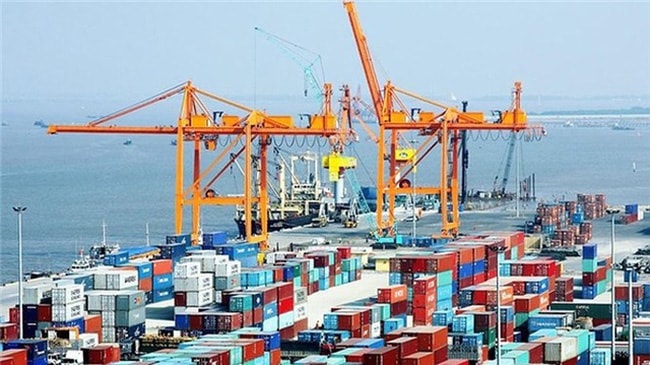

![[Photo] Buddha's Birthday 2025: Honoring the message of love, wisdom, and tolerance](https://vphoto.vietnam.vn/thumb/1200x675/vietnam/resource/IMAGE/2025/5/12/8cd2a70beb264374b41fc5d36add6c3d)
![[Photo] Prime Minister Pham Minh Chinh starts construction of vital highway through Thai Binh and Nam Dinh](https://vphoto.vietnam.vn/thumb/1200x675/vietnam/resource/IMAGE/2025/5/12/52d98584ccea4c8dbf7c7f7484433af5)














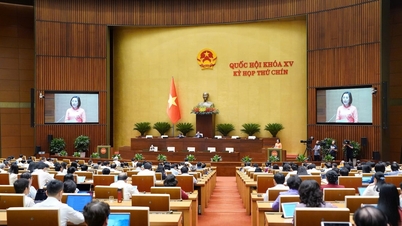

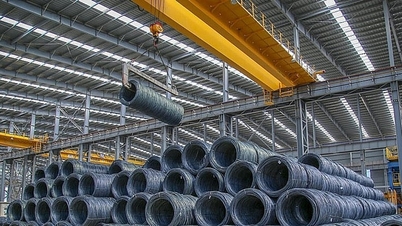



![[Photo] General Secretary To Lam meets and expresses gratitude to Vietnam's Belarusian friends](https://vphoto.vietnam.vn/thumb/1200x675/vietnam/resource/IMAGE/2025/5/11/c515ee2054c54a87aa8a7cb520f2fa6e)






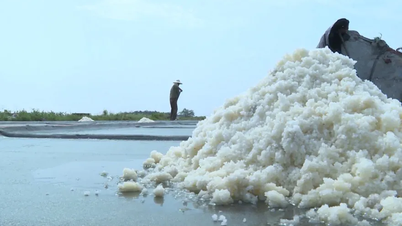
















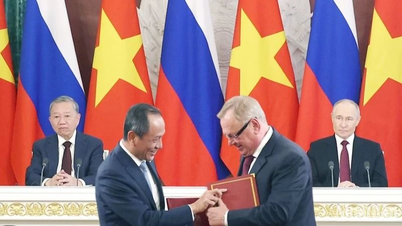

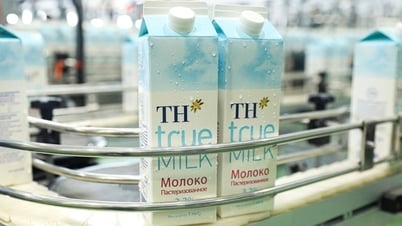










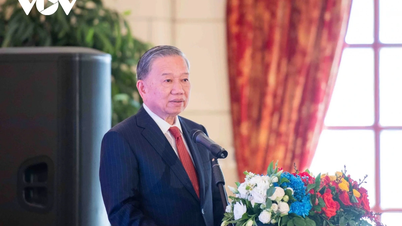

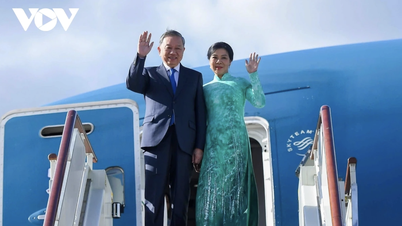
























Comment (0)